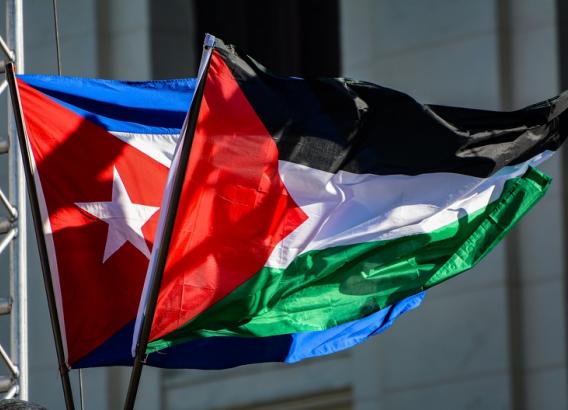6 Things That Made WBC '17 a Success

The World Baseball Classic has cemented itself as a hit, embraced by fans foreign and domestic. The 2 1/2-week tournament, which concluded Wednesday night with Team USA beating Puerto Rico 8-0 to win its first World Baseball Classic title, has been the most watched of the four held to date. Total attendance for the 40-game tournament was 1,086,720 or 27,168 per game, obliterating the previous high of 801,408 in 39 games, or 20,549 per game, from the second World Baseball Classic in 2009. Wednesday night's final brought 51,565 out to Dodger Stadium.
Television viewership of the tournament has also been the best in its history, with domestic ratings through the semifinals up 21 percent compared to 2013, according to MLB Network. The semifinals themselves more than doubled in viewership from 2013, with the U.S.-Japan semifinal on Tuesday night marking the network's most watched non-postseason game, averaging 1.4 million viewers and peaking at 1.7 million.
Team USA's deep run certainly helped inflate those numbers. However, attendance and viewership of the tournament were up before things got serious for the U.S. Of particular note, Team USA's first-round matchup against the Dominican Republic set the network's previous record for viewership of a non-postseason game, averaging 977,000 and peaking at 1.2 million, also setting a record for in-person attendance at a baseball game in Marlins Park at 37,446.
To my delight, the World Baseball Classic, which will next be played in 2021, appears to be here to stay. For those who still haven't quite bought in, here are several more reasons that the World Baseball Classic is valuable.
1. Celebration of diversity and national pride
Teams representing 20 nations have participated in the first four Classics, each using the tournament as an occasion to play for national pride and to exhibit unique quirks of their culture. The Dominican Republic adopted a plantain as a lucky talisman during its title run in 2013. This year's Cinderella team, Israel, wore yarmulkes during the national anthem and propped up an oversized Mensch on a Bench in the dugout. The Italians kissed each other on both cheeks after run-scoring plays. Korea stationed cheerleaders on top of the dugout during the games in Seoul this year. Japanese fans sang unique songs for every hitter in the lineup (as well as some foreign players who play in Nippon Professional Baseball during the regular season). Amateur mascots roamed the stands in Guadalajara, and brass and percussion instruments were plentiful in the stands in both hemispheres.
Meanwhile, players flipped bats, pumped fists, pounded chests, celebrated home runs and otherwise exhibited passion and personality without engendering the cascade of hot takes and hurt feelings that tend to follow such actions (with maybe one or two exceptions). In the process, they demonstrated not only how much fun the game can be, but how much pride they took in playing for the countries many of them had to leave in order to fulfill their baseball dreams.
Beyond those additional flavors, this year's tournament further established the Netherlands and its constituent countries as an international baseball powerhouse, Puerto Rico as a resurgent one, and demonstrated the degree to which the international reach of the game is expanding via surprisingly strong performances from first-time participants Israel and Colombia and another impressive showing from Team Italy. Yes, two of those teams were comprised primarily of American players of Jewish and Italian heritage, but the success of those teams will surely continue to stoke interest in the game in those countries.
2. International superstars
One of the chief complaints about the World Baseball Classic is the lack of full participation from the best Major League players, but the tournament isn't just about Major Leaguers choosing up sides. It's also a showcase for the best players from foreign leagues. Japan, which has never failed to reach the semifinals, always sends an All-Star team of Nippon Professional Baseball players, several of which typically sign Major League contracts during the four years between tournaments. Cuba has already lost many of its biggest stars from past World Baseball Classics to the Majors, but the World Baseball Classic nonetheless provides a rare opportunity to see Cuba's best players in action, with Alfredo Despaigne again ranking among the tournament's best hitters this year.
Elsewhere, rosters were populated with players from the Korea Baseball Organization, the unaffiliated Triple-A Mexican League, Taiwan's Chinese Baseball League, the Netherlands' Honkbal Hoofdklasse, the Italian Baseball League and the Australian Baseball League. Not all of those leagues feature a level of play comparable to those of NPB or Cuba's Serie Nacional. Still, it's exciting to get a look at players such as the NPB's Yoshitomo Tsutsugoh, Tetsuto Yamada and Kodai Senga -- as well as Major League-castoff-turned-NPB stud Wladimir Balentien of the Netherlands -- Despaigne, Cuban center fielder Roel Santos, and Yoenis Cespedes's 19-year-old half-brother Yoelqui, Mexico's big-hitting 5-foot-7 second baseman Esteban Quiroz and 300-pound designated hitter Japhet Amador, and some of the best players from Korea and Taiwan, two countries that have been a growing source for Major League talent in recent years.
3. Unheralded heroes, and first and last looks
MLB's postseason is often celebrated for its ability to make a star out of an otherwise anonymous or unaccomplished player, be it Travis Ishikawa, Francisco Cabrera, Brian Doyle, Al Weis, Bill Bevens or Al Gionfriddo. The World Baseball Classic goes a step further, providing a platform for impact performances from players who have struggled to reach, or to remain in the Major Leagues. This year's tournament featured such performances from Israel's Ryan Lavarnway, Ike Davis, Nate Freiman and Josh Zeid, Italy's John Andreoli, Australia's Allan de San Miguel and the Netherlands' Jair Jurrjens, Shairon Martis, Loek Van Mil and Shawn Zarraga. It also saw several Major League veterans come out of retirement, including Israel's Jason Marquis, Canada's Ryan Dempster and Eric Gagné and Puerto Rico's J.C. Romero, and provided early looks at some compelling prospects, including Dodgers outfielder Alex Verdugo (Mexico), Mariners outfielder Tyler O'Neill (Canada), Indians second baseman Tyler Krieger (Israel), Yankees center fielder Tito Polo (Colombia), and new Rays righty Jose De Leon (Puerto Rico).
4. Experimental rules and strategy
The World Baseball Classic is emerging as a safe space in which to experiment not only with rule changes, but with alternate managerial strategies. For example, we all got to see the international extra-inning rule baseball plans to deploy in two rookie-level leagues this year -- which puts men on first and second to start an inning after the 10th -- in action three times in this tournament. (I personally dislike the rule, but at least my objection now comes from a more informed perspective after seeing it action.) Meanwhile, the pitch limits laid out in the tournament rules, which stem from the same workload concerns that prompted the extra-inning rule, resulted in something resembling the bullpenning strategy frequently espoused by MLB Network's Brian Kenny. Meanwhile, we also got to see relics of seasons past, including the four-pitch intentional walk, and the absence of expanded replay. The game certainly moved faster without replay, but the inability to correct a blown call was not worth the savings. As for the four-pitch IBB, we were reminded of why we will mourn its absence when one pitcher almost skipped an intentional ball past his catcher and Puerto Rican closer Edwin Diaz threw one intentional ball faster than any pitch Jered Weaver threw during the 2016 season.
5. Managerial diversity
Heading into the 2017 season, there are just three Major League managers of color and only one, the White Sox's Rick Renteria, is Latino. That despite the fact that roughly 30 percent of the players in the league are Latino. In contrast, seven of the 16 World Baseball Classic managers this year were from the Caribbean, South or Central America. The tournament thus provides a showcase for diverse managerial candidates. Among this year's World Baseball Classic managers were longtime Giants hitting coach Hensley Meulens, who expertly piloted the Netherlands to the semifinals, Tigers first-base coach Omar Vizquel, who managed Venezuela, former Marlins interim skipper Edwin Rodriguez, who took Puerto Rico to the finals for the second time, 38-year-old Mexican manager, and former Padres infielder, Edgar Gonzalez, and 36-year-old Luis Urueta, currently the Diamondbacks' Minor League field coordinator, whose Colombian squad gave both Team USA and the Dominican Republic a scare in the first round. Also worth noting are some of the tournament's bench coaches -- including Puerto Rico's Carlos Delgado, the Netherlands' Andruw Jones, currently a special assistant in the Braves' front office, and Venezuela's Eddie Perez, the Braves' current first-base coach -- and general managers, such as Colombia's Edgar Renteria and the Dominican Republic's Moises Alou.
6. Playoff-intensity baseball in March
Even if the World Baseball Classic featured none of the above, it would still be worth watching for providing compelling, playoff-intensity baseball during the long month of March. In a tournament in which a team's fate can be determined in the course of two games, nearly every game was a legitimate must-win, and this year's World Baseball Classic not only delivered passionate, meaningful games, but many of those games went down to the wire. Out of the 40 games played in this year's tournament, seven went into extra innings, 10 were decided by just one run, 12 games found at least one team needing a win to avoid elimination, and eight, including the final four games of the tournament (only three by design), found both teams needing a win to survive. Of those last four games -- the Pool F finale between the U.S. and Dominican Republic, the two seminfinals and the final -- both semifinal games were decided by a single run, and one of those two went into extra innings. As much time as we spend poring over the statistical, historical and cultural aspects of baseball with wrinkled brows, the game's primary purpose is entertainment, and the World Baseball Classic not only is a welcome reminder of that fact, it has, in each of its four iterations, been tremendously successful in achieving that goal. I'm already looking forward to 2021.













Add new comment